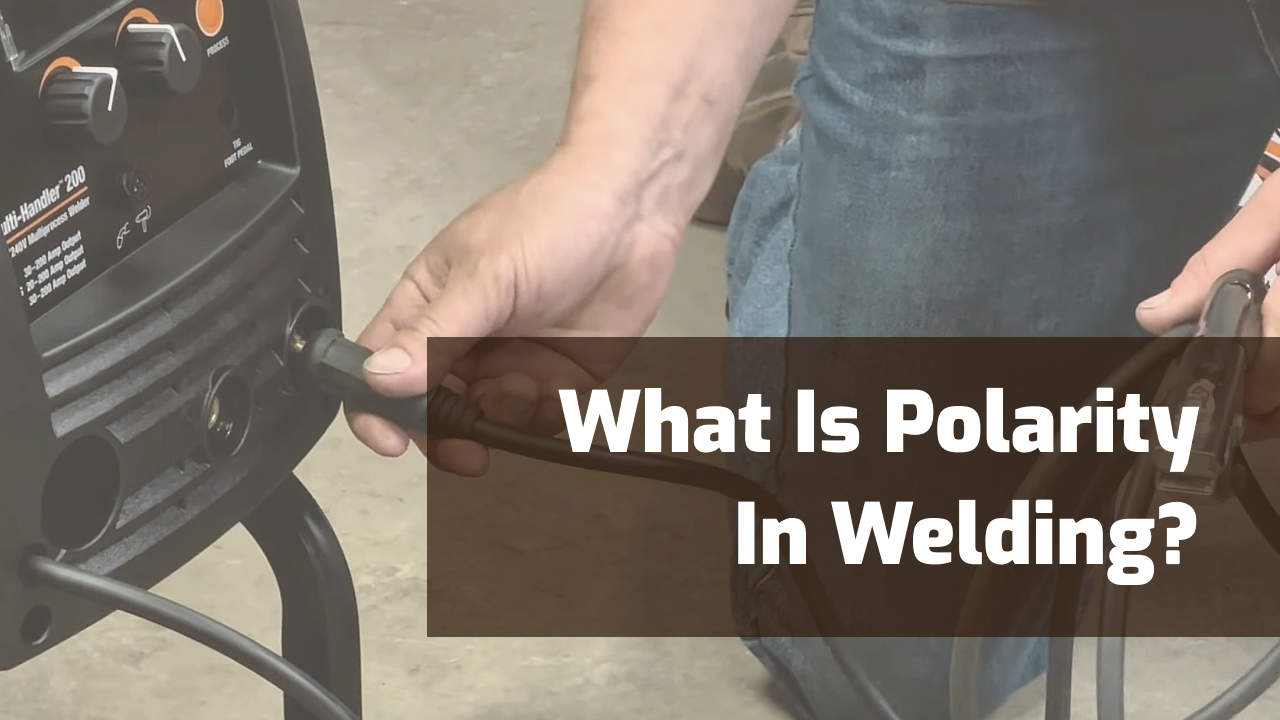Polarity is very important when welding, and it should be one of the first steps to consider before striking an arc. There are two options when it comes to polarity; straight and reverse.
Picking the right polarity between these two choices will greatly impact whether you have a sound weld that would pass industry standards or a weld that will fail, and you’ll have to grind out and start over.
Let’s dig deeper into this topic to make the right choice the first time.
What Is Polarity in Welding?
Polarity refers to the direction of electrical current flow between your welding electrode and your work clamp that completes the welding electrical circuit.
It’s important to understand polarity as it’ll affect electrode consumption and its melting rate, heat distribution in your parent metal, and what your weld bead will finally look like. Polarity directly affects the strength and quality of your weld.
Understanding Polarity in AC & DC Welding
There are also two types of current when welding: direct current (DC) and alternating current (AC). Cheaper welding machines tend to be DC only, while more expensive machines use AC/DC, capable of both.
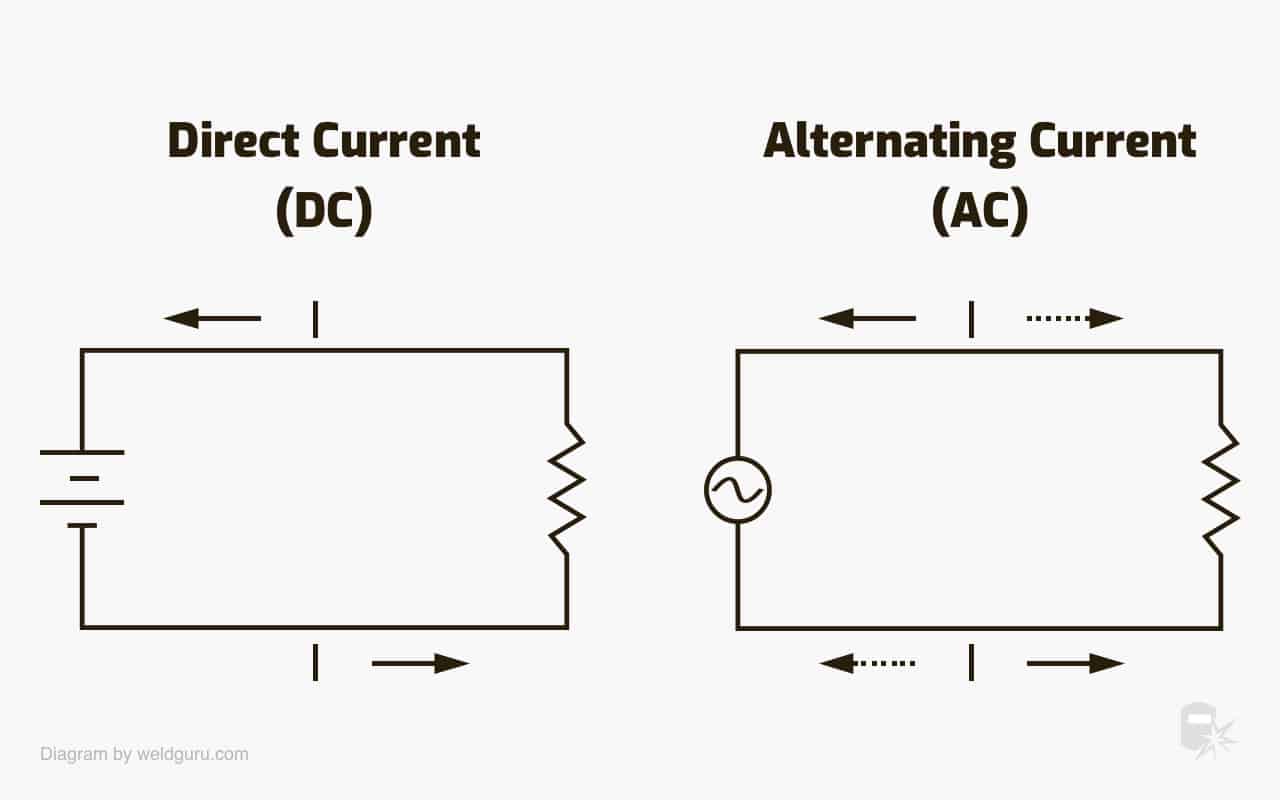
© weldguru.com – Image usage rights
In short, DC only flows in one direction, keeping it in constant polarity. AC, on the other hand, shifts its flow half the time in one direction and half the other, alternating its polarity from positive to negative 120 times per second in a 60-hertz current.
As DC can only flow in one direction, it breaks into two polarity options:
- DC electrode positive (DCEP), also called reversed polarity
- DC electrode negative (DCEN), also called straight polarity.
More on these will come later.
Most arc welding works best with DC because it provides a more stable arc with less spatter. AC works well with specific applications like aluminum and magnesium when TIG welding.
The Different Types of Polarity for DC and Looking at AC
As every US household runs on AC, welding machines use a diode in a rectifier to stop one-half of the AC cycles from producing DC.
Which half cycle you stop determines what polarity the DC will be.
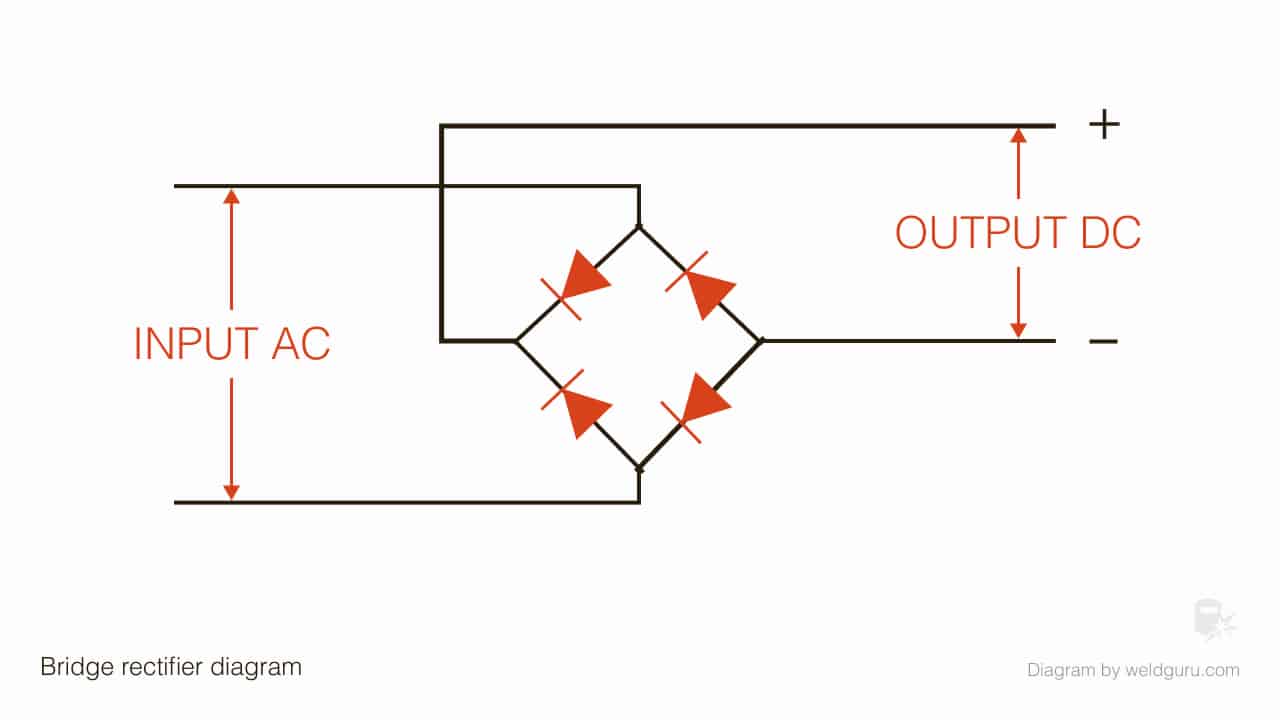
© weldguru.com – Image usage rights
Let’s take a closer look at each one.
Straight Polarity – DC Electrode Negative (DCEN)
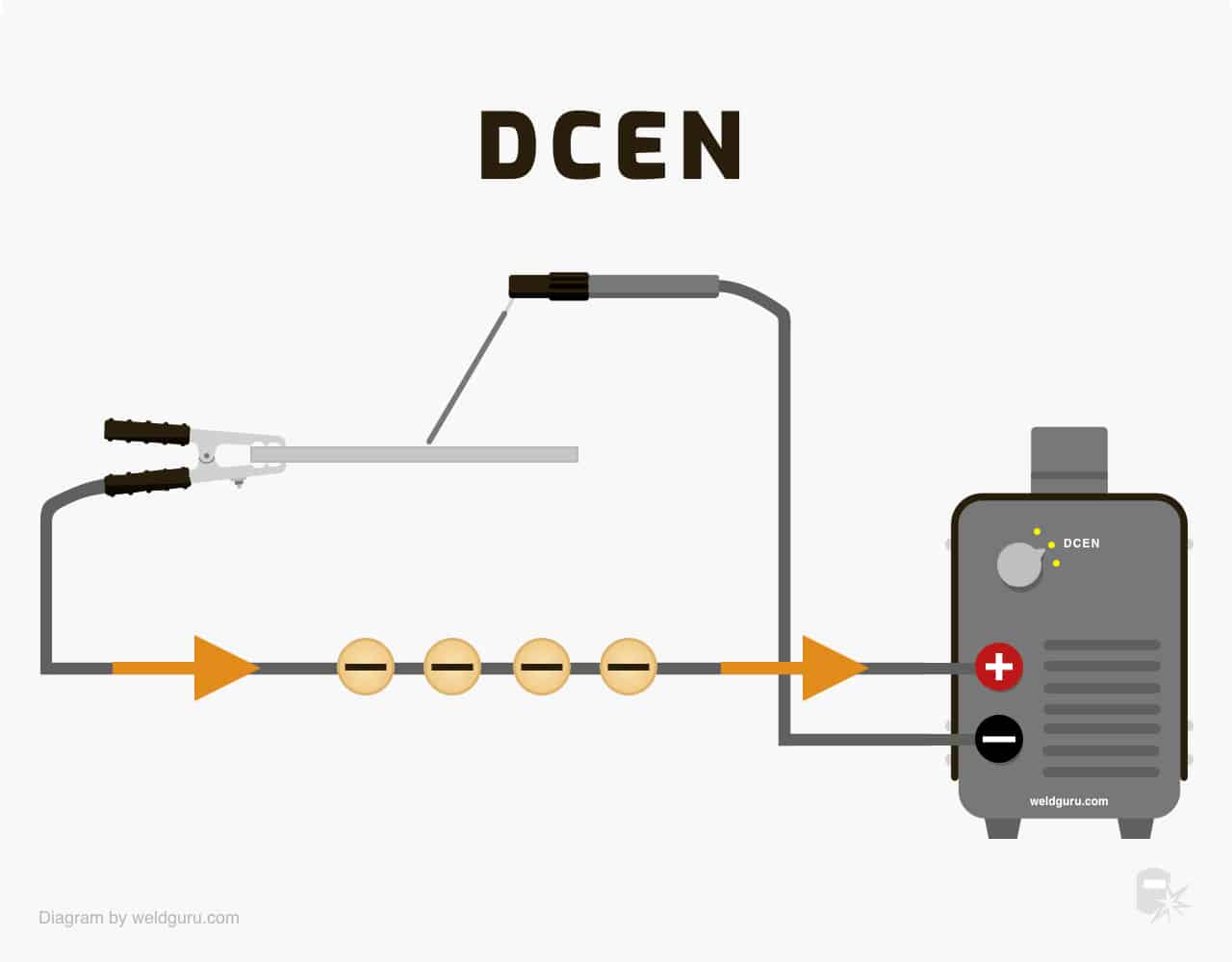
© weldguru.com – Image usage rights
When welding with straight polarity, your electrode will be negative, and your workpiece will be positive.
In this circuit, we’re stopping the positive half cycle of AC, and the electrons will flow from your electrode to the workpiece.
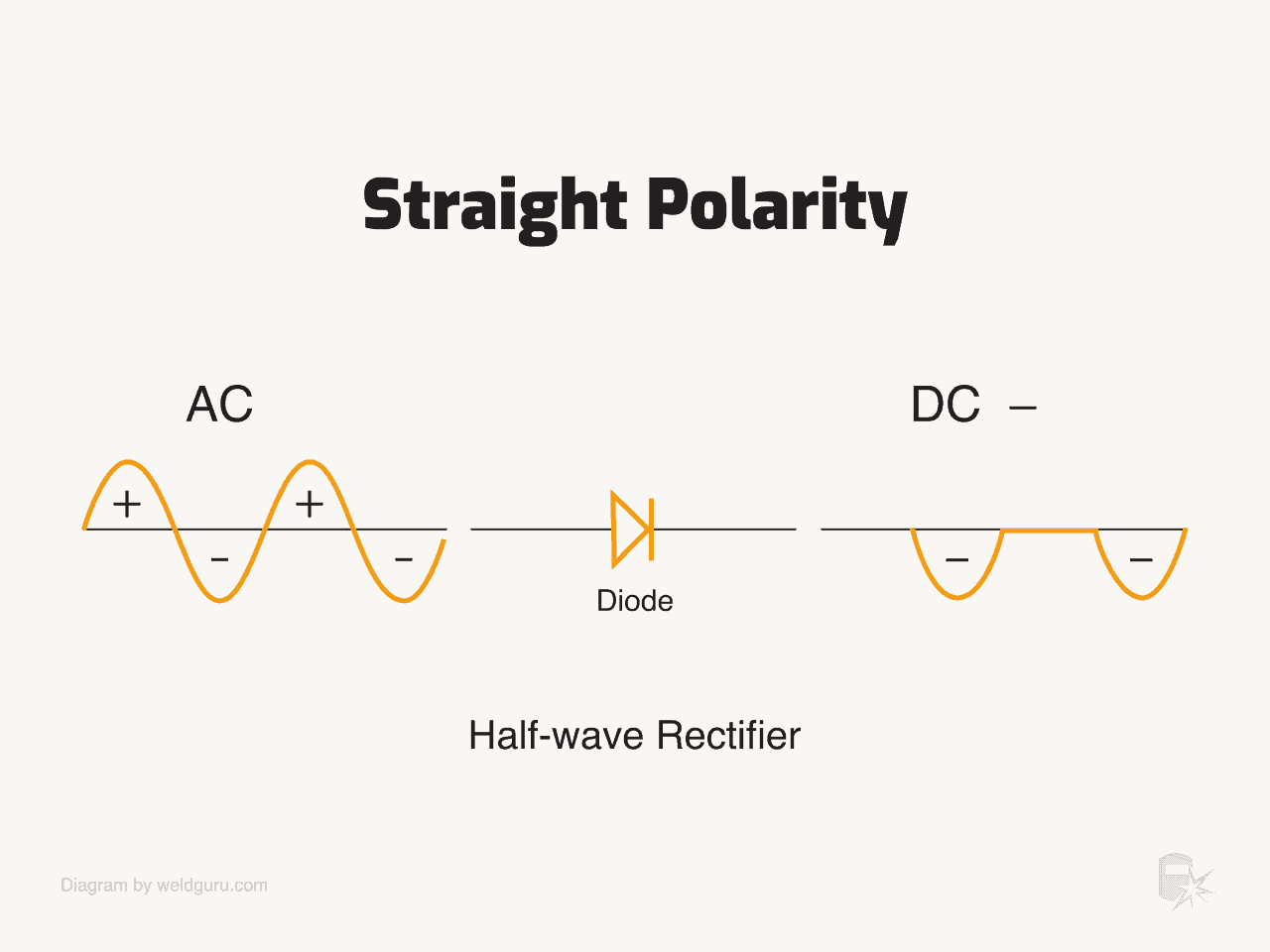
© weldguru.com – Image usage rights
Because electrons flow from negative to positive, around 70% of the arc heat will be in your electrode and only about 30% at your workpiece.
This will create a wide but shallow weld puddle, a higher burn-off rate of your electrode, and a higher deposition rate.
This makes straight polarity good for thin materials, as the workpiece won’t heat as much. But with insufficient heat in the parent metal, you won’t get any electrode oxidation, meaning there’s no impurity removal.
Advantages of DCEN
- Great for thin materials
- Higher deposition rate
Disadvantages of DCEN
- High electrode consumption
- Undesirable bead shape for thicker materials
- Insufficient fusion
- No impurity removal
Reverse Polarity – DC Electrode Positive (DCEP)
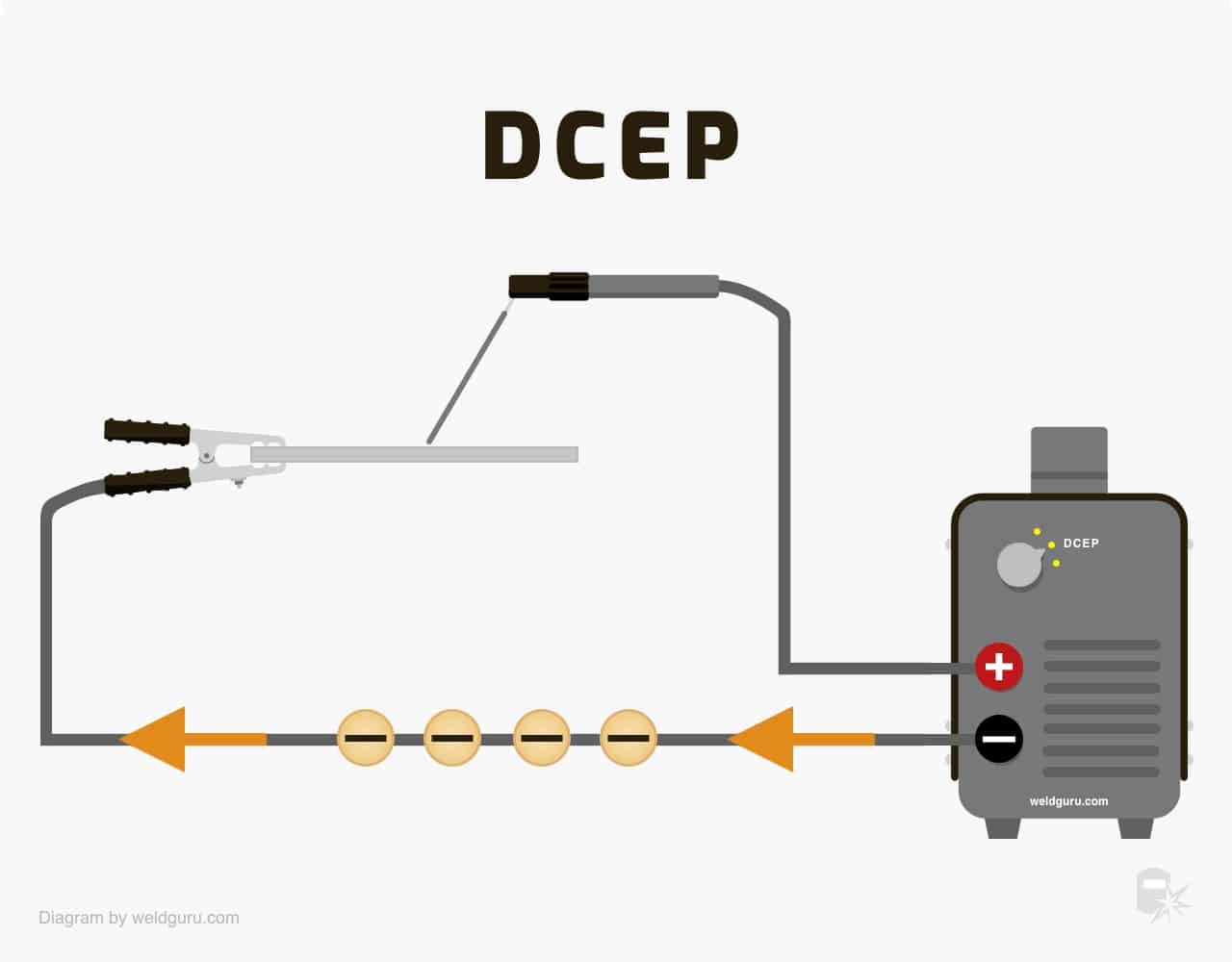
© weldguru.com – Image usage rights
When welding with reverse polarity, your electrode will be positive, and your workpiece will be negative.
In this circuit, we’re stopping the negative half cycle of AC. The electrons will flow from your workpiece to your electrode.
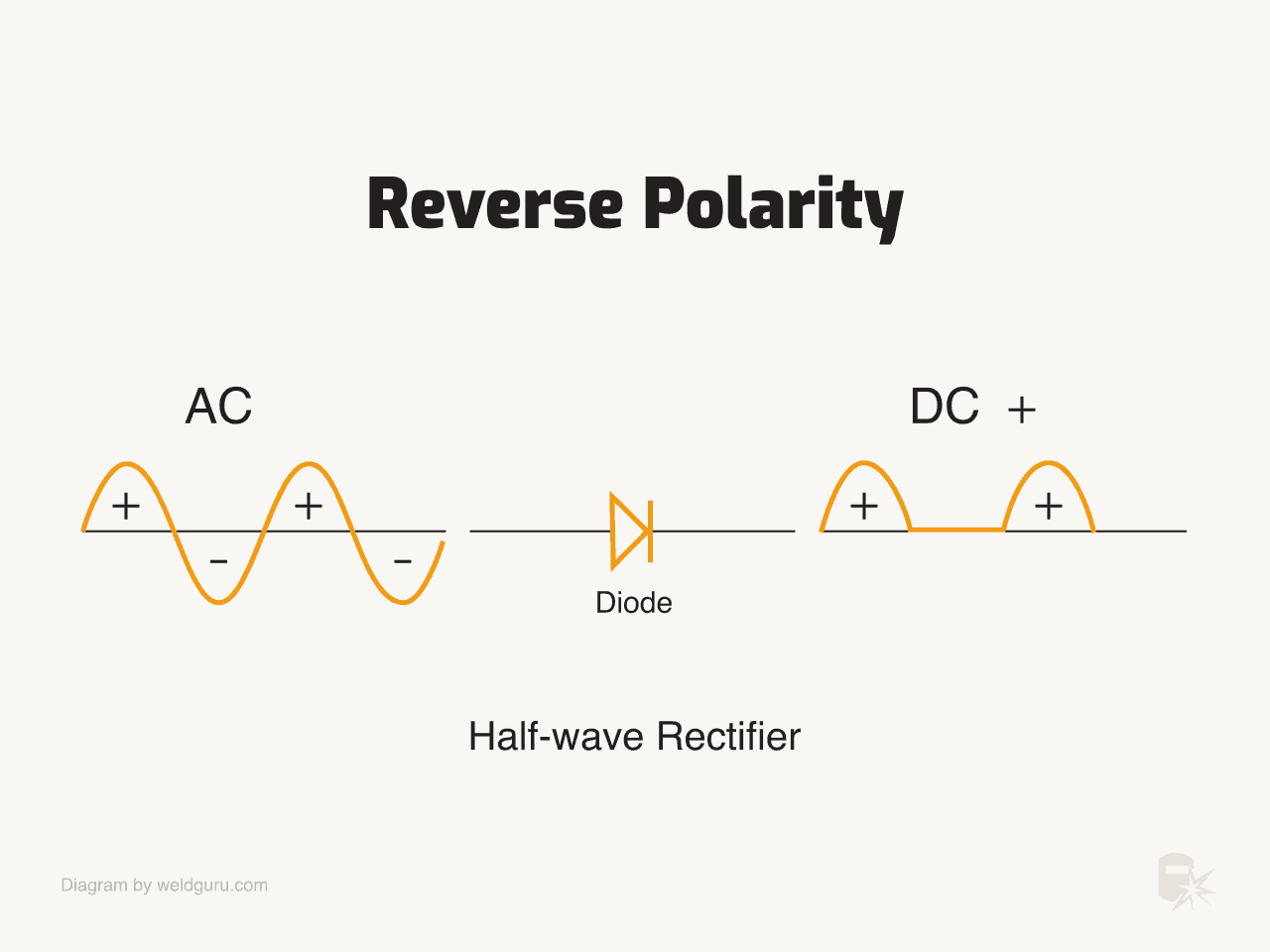
© weldguru.com – Image usage rights
The extra heat on your workpiece will create a narrow weld bead with more penetration and slower electrode consumption, making bead control easier to get a more desirable-looking weld.
This extra heat in the parent metal will now melt it easier and faster, creating a hotter weld puddle, causing electrode oxidation, and removing impurities that will burn off and infuse in the slag.
Advantages of DCEP
- Lower electrode consumption
- Improved bead control
- Deeper penetration
- High impurity removal
Disadvantages of DCEP
- Narrow weld bead
- Lower deposition rates
Alternating Current (AC).
With AC, you get straight and reverse polarity half-cycles happening one after the other. With this, you get all the advantages and disadvantages of both polarities as they are both happening.
In AC, your electron flow, or frequency, changes direction 120 times a second, giving you balanced heat between your electrode and your workpiece and making it a good all-around choice.
More expensive welding machines give you the settings to change the frequency. This lets you adjust the arc characteristics, weld puddle behavior, bead profile, penetration, and appearance.
Advantages
- Balanced heat input
- Great for welding aluminum
- Greatly reduces arc blow
- Great control over bead appearance and penetration
Disadvantages
- More expensive welding equipment
- Limited applications
- Lower deposition rate than DC
Here is a picture of the difference in penetrations and bead appearance with each polarity.
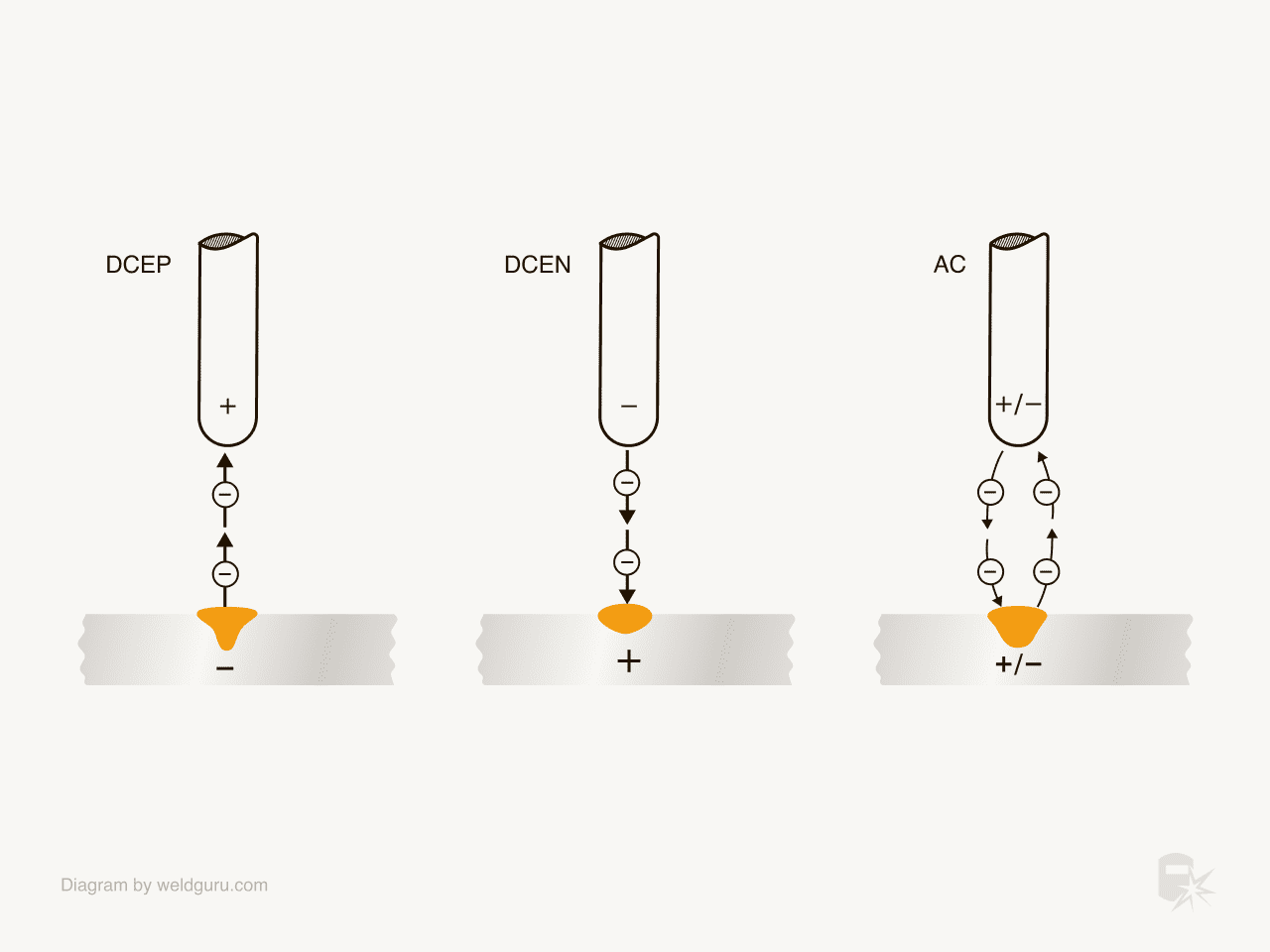
© weldguru.com – Image usage rights
How Polarity Affects Welding Performance
Now you have an overview of the different welding polarities, let’s take a closer look at how each one affects the welding performance.
| DCEN | DCEP | AC | |
|---|---|---|---|
| Filler Deposition | High | Low | Medium |
| Weld Penetration | Shallow/Wide | Deep/Narrow | Balanced |
| Base Plate Cleaning | No | Yes | Half the Time |
| Reinforcement | Poor | Great | Good |
| Heat Affected Zone (HAZ) | Wide | Narrow | Medium |
| Weld Bead Appearance | Poor | Good | Excellent |
| Electrode Capacity | Excellent ⅛” 400A | Poor ¼” 120A | Good ⅛” 225A |
| Heat Balance (Approx.) | 70% Electrode 30% Work | 30% Electrode 70% Work | 50% Electrode 50% Work |
- Weld Deposition: With 70% of your heat on your positive terminal, DCEP will give you a high weld deposition, great for bigger fillet welds and deeper groove welds. DCEN will give you a lower deposition rate, making it great for thinner materials and smaller welds.
- Penetration: DCEP typically offers deeper penetration into the workpiece, making it suitable for joining thicker materials. DCEN offers shallower penetration, suitable for thin materials, or when you want a less penetrating weld, such as partial joint penetration.
- Base Plate Cleaning: This cleaning factor comes from heating the parent metal, and those oxides transfer into the weld puddle and burn off. Knowing this, you’ll get great cleaning action from DCEP, none from DCEN, and some from AC.
- Reinforcement: Reinforcement goes hand in hand with penetration. The greater the penetration, the greater the reinforcement will be. You’ll get great reinforcement with DCEP, poor with DCEN, and somewhere between with AC.
- Heat Affected Zone (HAZ): You determine the width of your heat-affected zone by how much heat your electrode puts into the parent metal. When 70% of your heat is in your electrode for DCEN, this will create a much wider HAZ than with DCEP.
- Weld Bead Appearance: How easily you can manipulate your weld puddle will affect this. It’s much easier to control with DCEP, giving you a good-looking weld. It’ll be a little harder with DCEN, giving you a poor bead appearance.
- Electrode Capacity: Because your electrode will burn slower in DCEN, you can increase your amperage greatly compared to DCEP. Higher amperage gives you a higher deposition rate and shallow penetration.
- Heat Balance: This is the most crucial aspect of polarity. If you understand this, everything else makes sense. For DCEN, 70% of your heat will be on your electrode and 30% on your workpiece. The reverse is true for DCEP.
Choosing the Right Polarity
So, now you have a pretty good understanding of what polarity does to your weld. Choosing the right polarity depends on what consumables you have on hand.
Each electrode you have has a designator telling you its compatible polarity.
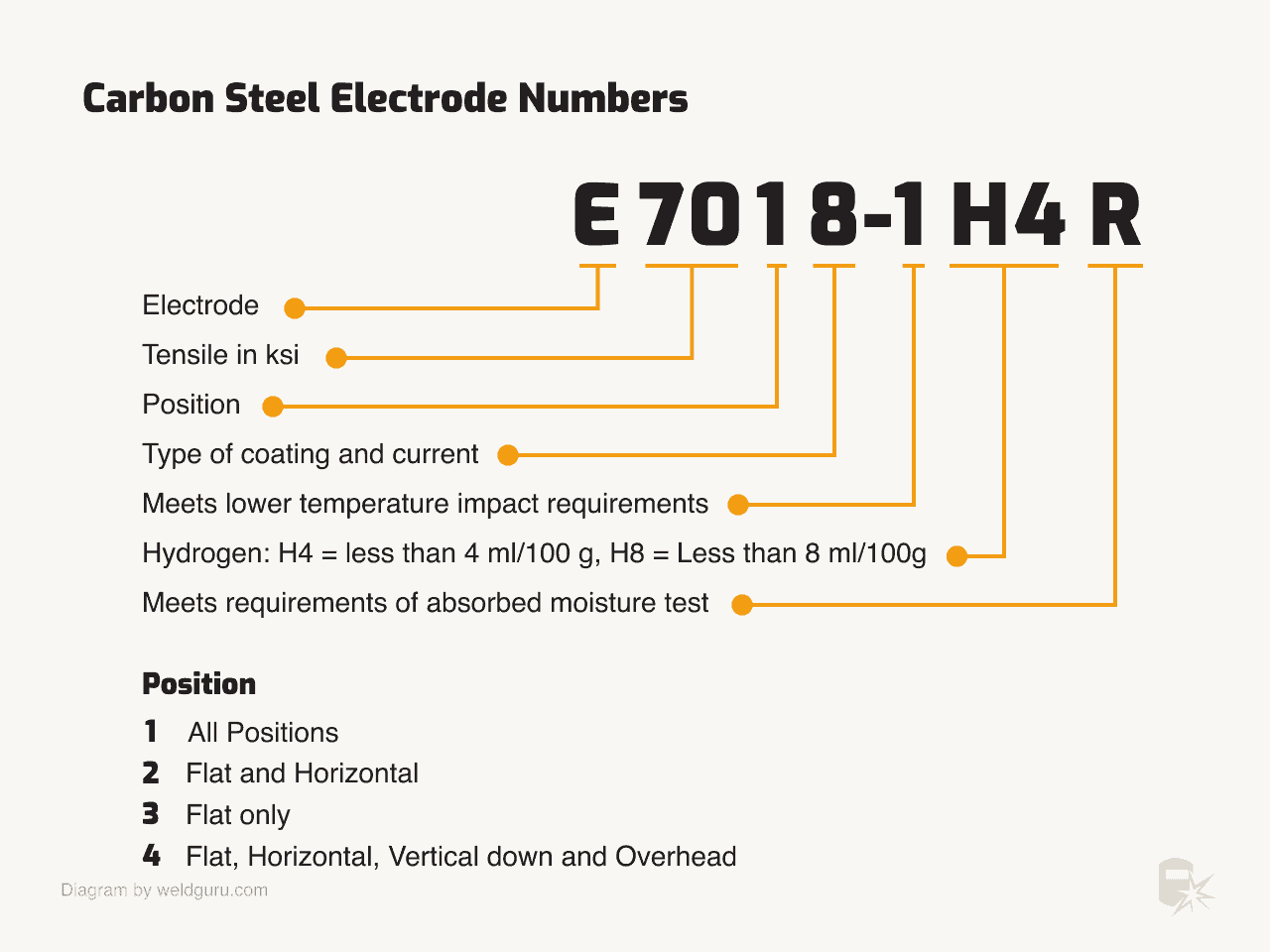
© weldguru.com – Image usage rights
In the example above, the digit “8” means you can use it with DCEP or AC only. Find out more about welding rod numbers here.
When you have multiple options—and on many occasions, you will—just ask yourself these questions:
- What kind of penetration are you looking for?
- What type of weld appearance do you need?
- What speed of weld deposition do you require?
Experienced welders ask these questions to determine which polarity best suits them for their project.
If you cannot tell what terminal is negative and which one is positive, put a 6010 electrode in your electrode holder and start welding.
If it starts to spatter uncontrollably, making a loud hissing sound, and the slag is hard to remove, you’re on DC negative.
But if there’s minimal spatter, no loud hissing sound, and a narrow weld with good penetration, then you’re on DC+. I’ve used this trick more than a few times myself.
Wrapping It Up
As you can see, welding polarity is very important to consider before you even strike an arc.
When you have more than one option, try them all on a scrap piece of steel to see and feel each polarity option’s difference.
Just as you do in life, you can also have some fun experimenting with new things in welding. Best of luck!
